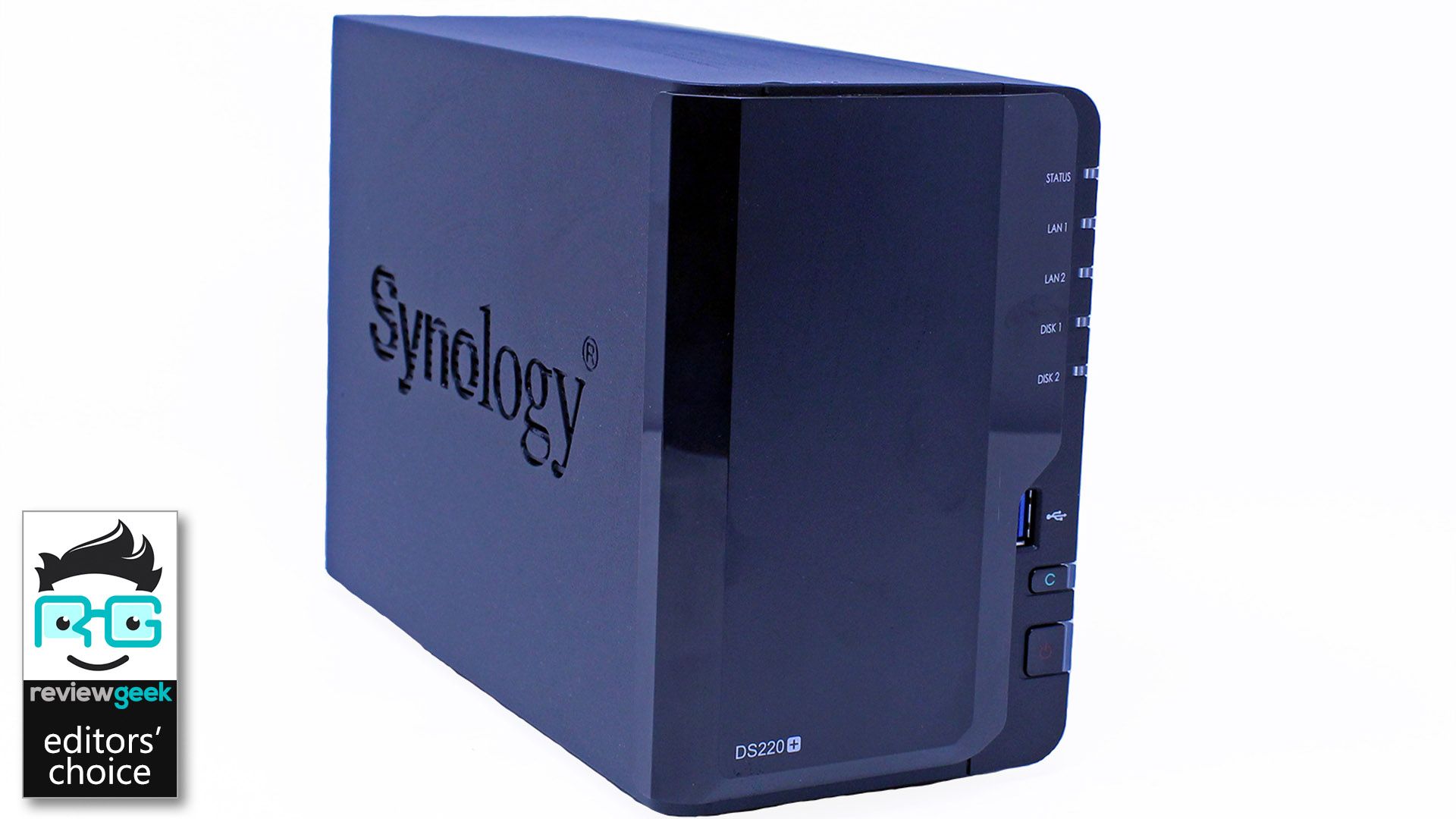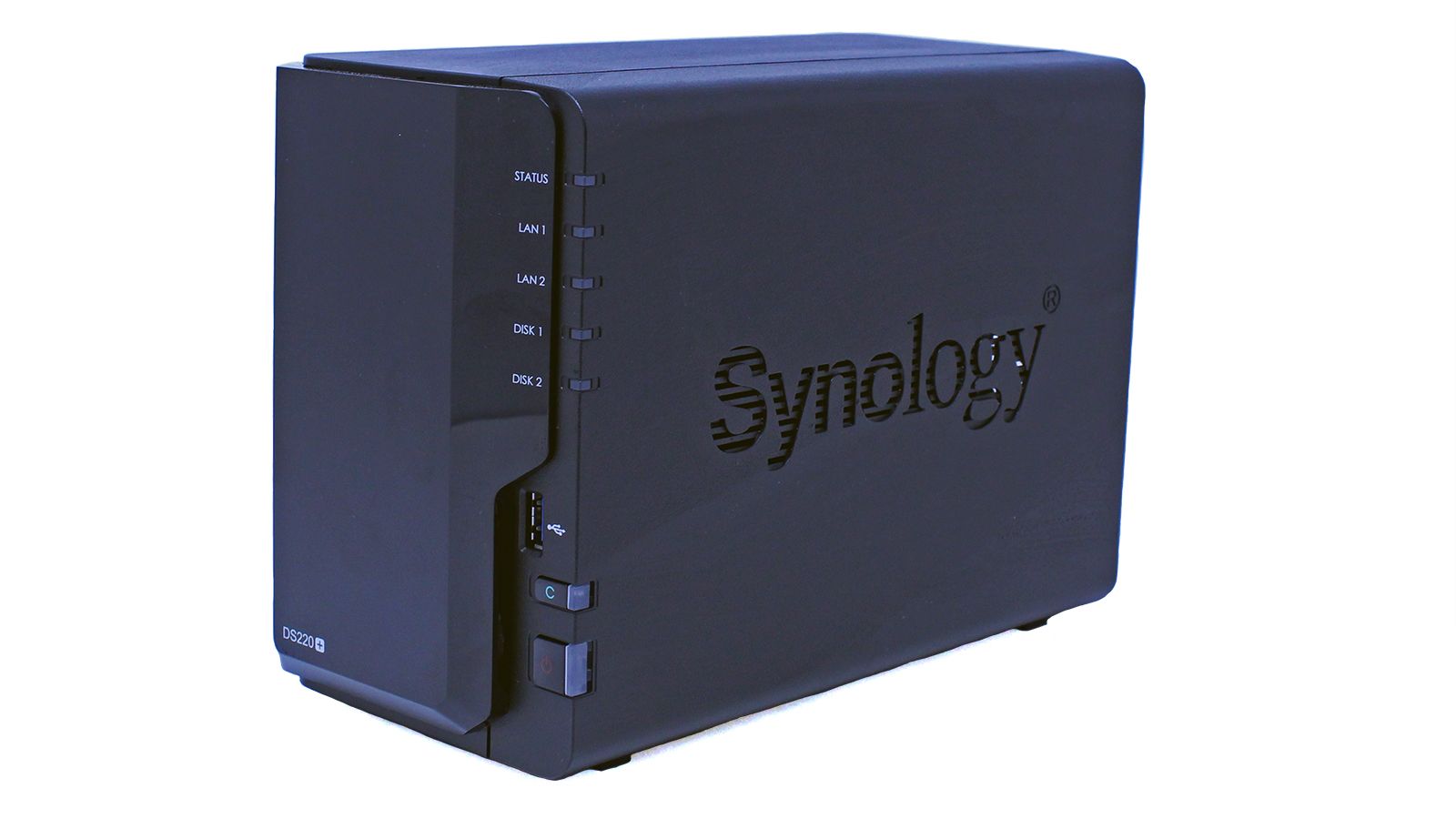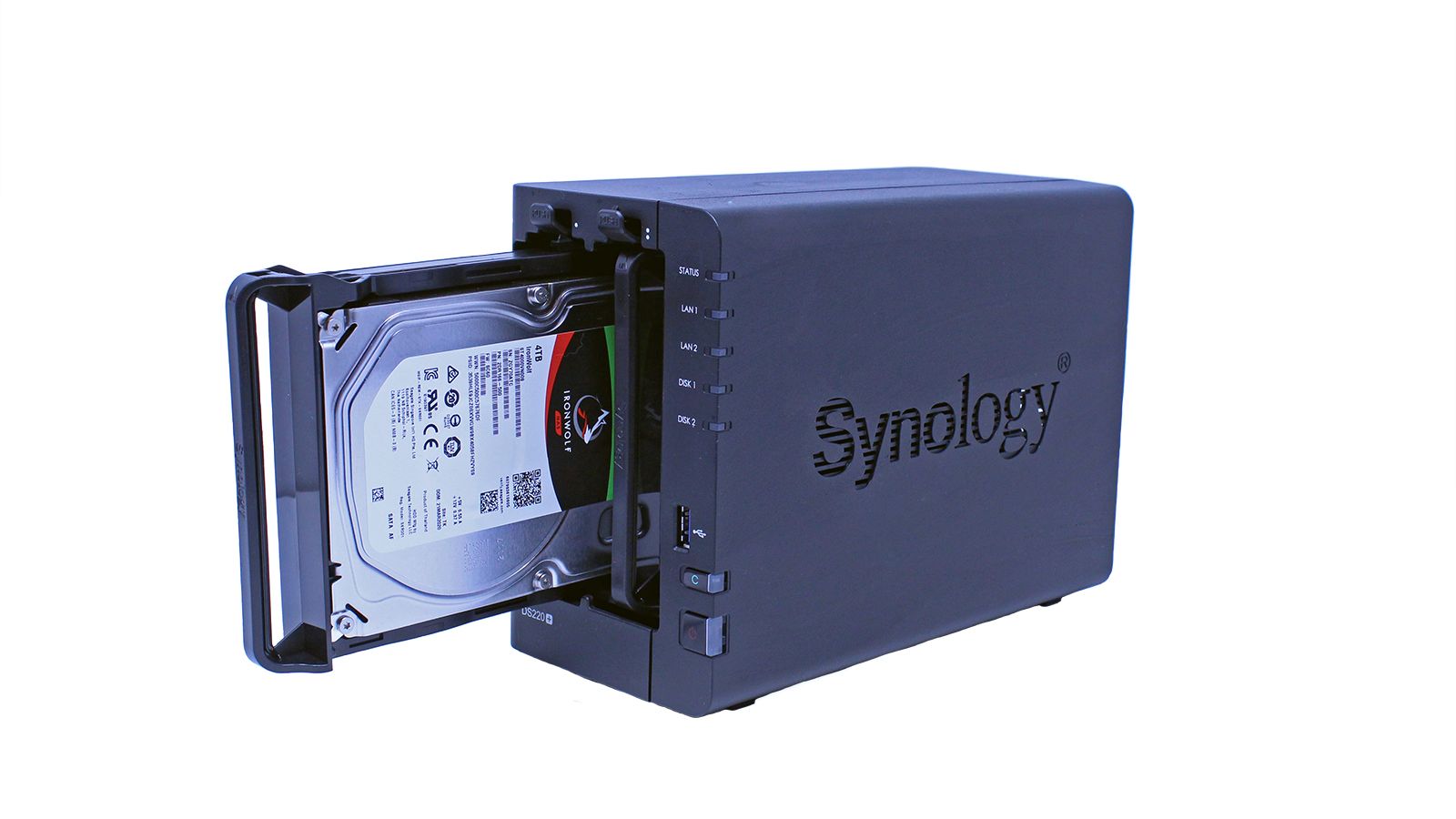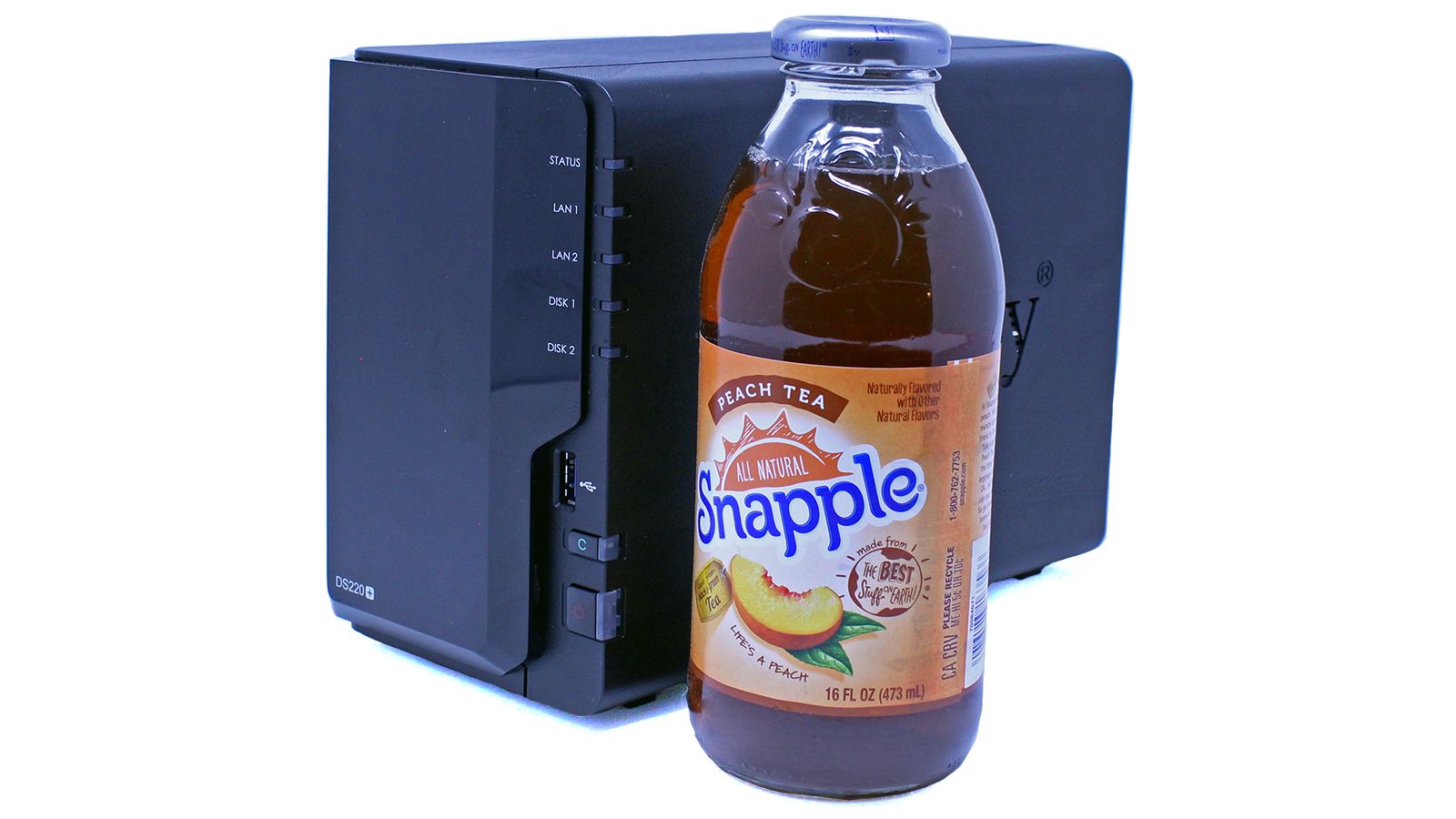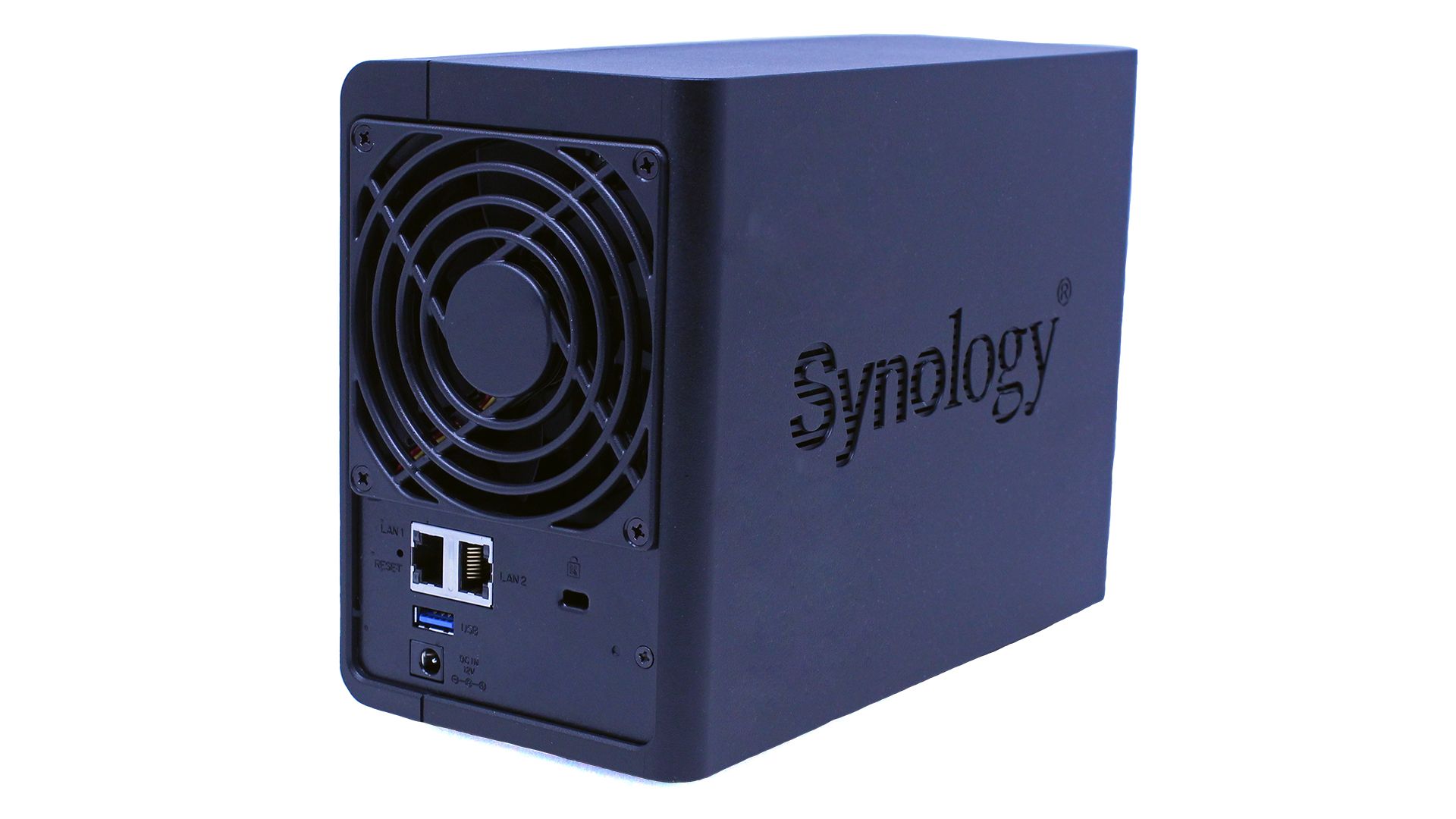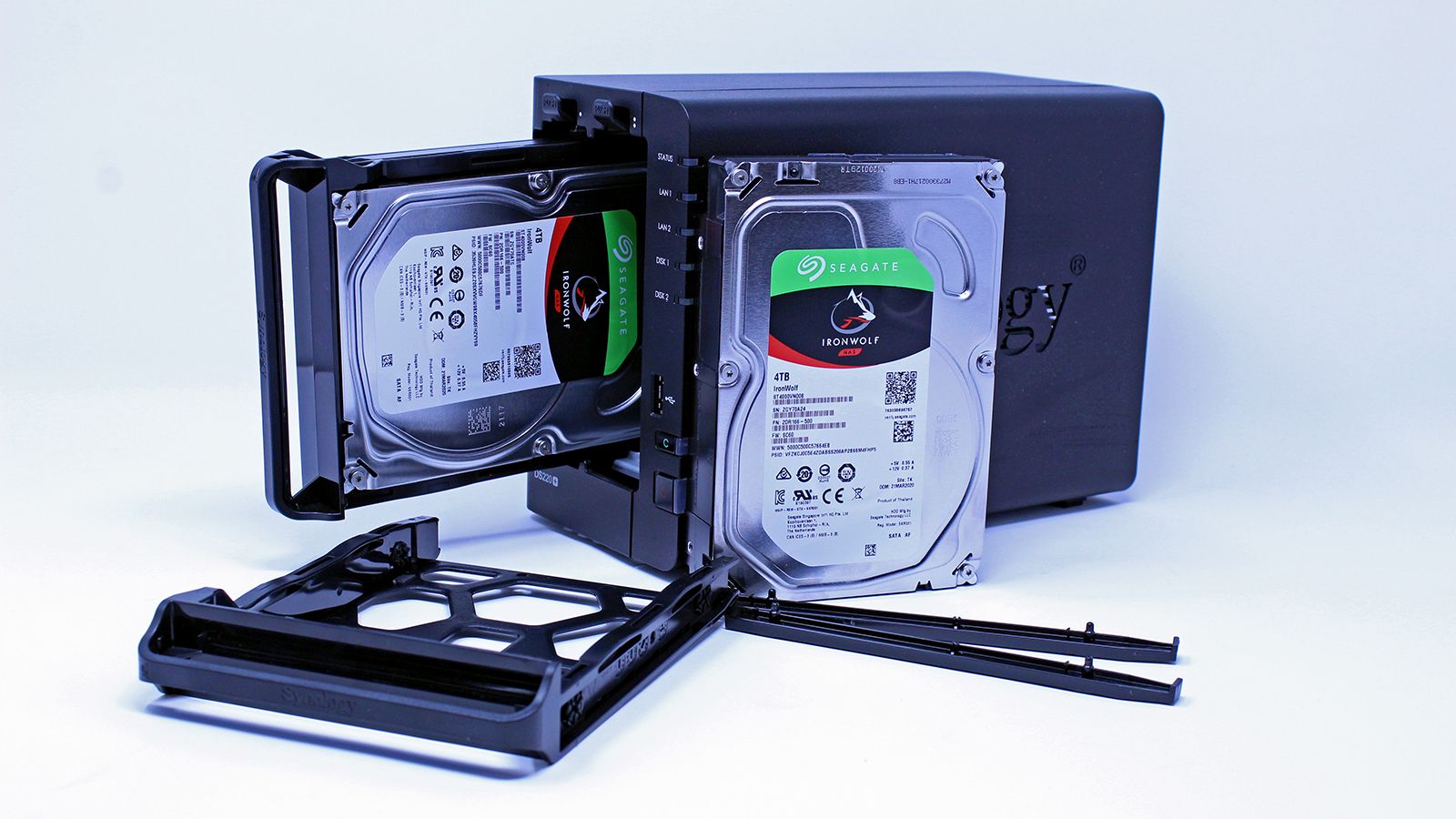Quick Links
For some time, we've said one of the best Network Attached Storage (NAS) units you can buy is the Synology DS218+ model. It's affordable, flexible, quiet, and doesn't take up much space. But at two years old, it's long in the tooth. That's ok, the Synology DiskStation DS220+ is here to take its place, and you get everything we've come to love from the old model with some improvements.
What's in a Name?
If you aren't familiar with the Synology naming scheme, it's worth learning as you begin your NAS purchase journey. The first two letters tell you whether the model is a Disk Station or a Rack Station---effectively telling you if it will sit on a desk or go in a rack. The next number tells you the maximum number of bays the model can support (including adding on expansions).
Following that, you'll see two digits for the year of release. And, the last bit tells you information about the model's features. FS means flash storage, XS is a premium Xeon CPU series, while a + is an Atom-based CPU with transcoding. V stands for value, and these models use ARM processors, giving up power for cost-savings, and J is the bottom-tier, budget-saving model, the cheapest and least powerful of the line.
So, we know the DS220+ is a Disk Station that supports a maximum of two bays (you can't expand it). Naturally, we know it released this year, 2020, and the + tells us it uses an Atom processor, specifically an Intel Celeron J4025 2-core 2.0 GHz processor.
But if you're wondering what makes it different than the previous DS218+, looking at the outside won't yield any clues.
The Same Case with Slight Modifications
At first glance, and even second and third glances, the DS220+ looks almost the same as the DS218+ model. That's a good thing, why mess with perfection?
The front features a pop-off cover that gives you access to the two bays built into the unit. That's strikingly different than larger Disk stations, which feature individually lockable slots. I prefer this over the lock slots. The pop-off cover is easier to remove and put back on. Once you have the lid off, you can pull out a hard drive to swap one for any reason.
One of my favorite things about Synology drives is the toolless setup. To take a hard drive out of its tray, you'll just remove to side plastic pieces. That's it, no muss or fuss, and most importantly, no need for a tiny screwdriver.
You'll find the usual indicator lights, power button, and a one-touch copy button to the right of the hard drive cover. That last button is excellent, if you connect a USB drive to your NAS, all you have to do is push the copy button to pull all the contents off your USB drive.
Speaking of USB, the front and back each house a single USB 3.0 port, which should be enough to suit most use-case scenarios. The back also sports a Kensington Security Slot, and two 1Gbe LAN ports, a departure from the previous model. The DS218+ had one LAN port and an eSATA port.
The change makes sense, as it'd be hard to utilize an eSATA port when you can't expand the bays. Two LAN ports, on the other hand, are potentially useful for anyone with a managed network switch or a dual-port network adapter.
Upgraded Internals Make a Good NAS Better Than Ever
The real difference between this model and the outgoing DS218+ is the internals. It steps from an Intel Celeron J3355 dual-core 2.0 GHz that can burst up to 2.5 GHz, up to an Intel Celeron J4025 2-core 2.0 GHz, which can burst up to 2.9 GHz 4 MB Cache. Likewise, the NAS is moving from Intel HD Graphics 500 to Intel HD Graphics 600, and from 2GBs of DDR3 RAM to 2GBs of DDR4 RAM.
If that looks like gibberish with just a few numbers increased, you're should still have a basic idea of what's going on here. Synology took a good thing and just swapped in the modern equivalent of the hardware. That means this NAS is a little more powerful and yet a little more power efficient than its predecessor.
How does that translate in real life? I didn't have any trouble transferring 1 TB of videos from my existing NAS to the DS220+ model. I set it to copy overnight and woke up in the morning to everything in place. Playing videos work well, and getting to my data is quick enough that I have no complaints.
The NAS is technically capable of transcoding for Plex, but the nature of its Atom processor does limit it to less complicated 1080p videos. Some of my high-end Blu-ray quality videos stuttered. As soon as I swapped to using my standard Plex hardware and the NAS as just storage location for the videos, everything went smoothly.
If your Plex content consists of DVD-level rips, the DS220+ will do the trick on its own just fine. But if you want something even higher quality, you might want to let some other hardware handle the Plex server duties while the NAS only holds your files.
For $300, it's best to temper your expectations. The DS220+ is perfect for storing your files and accessing simple data. Something like transcoding might require separate hardware to provide more oomph.
A Few Forgivable Misses
The DS220+ NAS is darn near perfect, but it just misses the mark. With a few changes, I think Synology could have hit it out of the park for this class of NAS.
The first miss is the unit's RAM slots. The Synology comes with 2 GB of DDR4 RAM preinstalled, but you can upgrade it to 6GBs of RAM if you desire. If jumping from 2 GBs to 6 GBs sounds odd, you've hit on my disappointment.
You can't get to the preinstalled 2 GB stick to swap it out for something bigger. All you can do is either add a 2 GB or 4 GB stick to the slot you can access in the hard drive bay. The difference in 6 GBs versus 8 GBs of RAM in a $300 NAS is likely negligible, so it's a forgivable choice.
The other disappointments are omissions. Other Synology NAS units in the "20 series" have optional NVMe SSD bays for improved cache performance. Pop in a compatible SSD, and your NAS performance will improve. But, getting SSD bays likely calls for a redesign, and thus, a price hike.
Likewise, you won't find a USB-C port on this NAS. I don't have a single USB-C external drive (whether flash drive or portable hard drive), so I didn't miss it. But NAS units are built to last, so it'd be great to have some future-proofing. Still, it's a want, not a need.
A Great Nas for the Right Price
The bottom line is, for the $300 price, the Synology D220+ is a great little NAS unit. And, as always, you get Synology software as part of the kit, and that's no trivial matter. Synology software is easy to use and easy to learn. That includes setting up the NAS, which requires plugging it in, connecting an Ethernet cable, then navigating to Synology's "Find Your NAS" website.
From there, the software practically does all the work for you. I set this NAS up in less than 10 minutes. Then it was just a matter of loading my files. With Synology's software, I literally dragged files from one browser window to another and let it do the rest of the work.
When it came time to access my files, I never felt like I was waiting (short of attempting to stream high-end 4K Plex files). It is limited to two bays, so keep that in mind. If you want more failure backup or more storage space, you might want to opt for a four or five-bay NAS. But those cost more, and you still need to factor in the hard drives (which you buy separately).
For everyone else, $300 plus hard drives gets you a great little NAS.
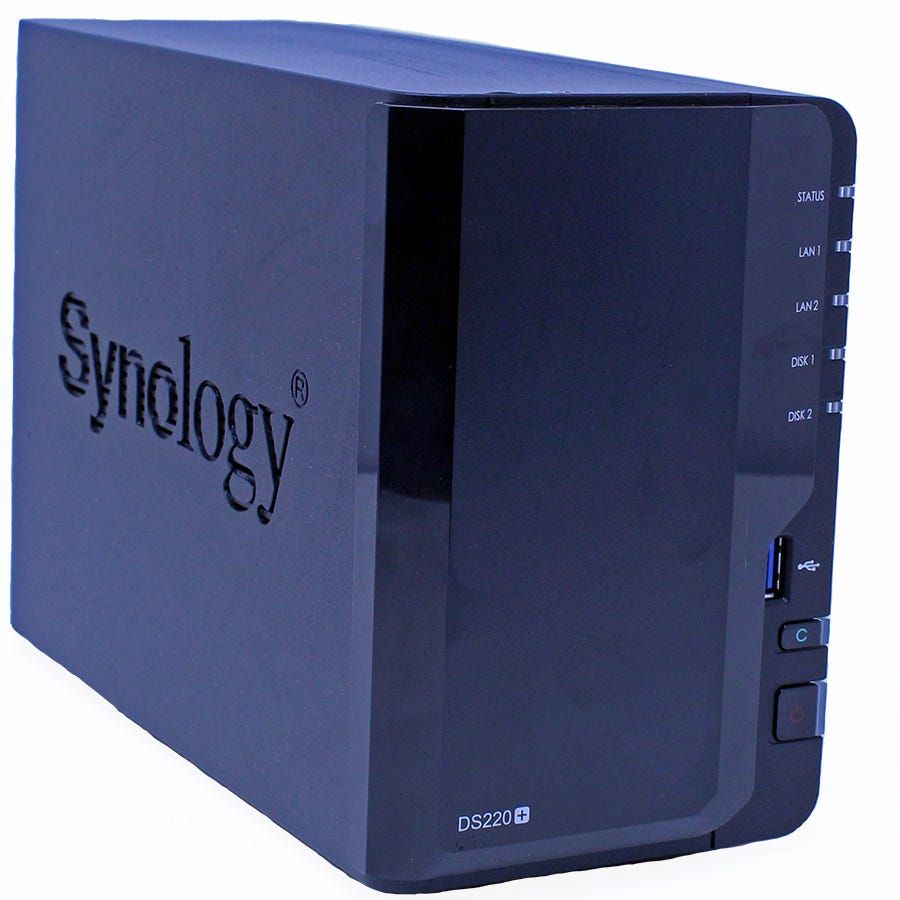
Synology DiskStation DS220+
- Affordable
- Fast enough for home use
- No Tool hard drive replacement
- Synology software is excellent
- You can't swap the pre-installed RAM
- No NVMe SSD bays

